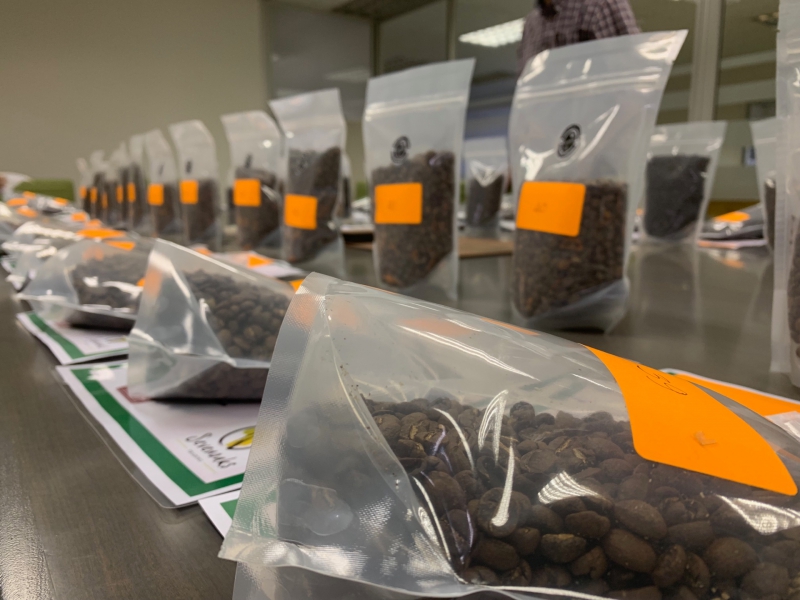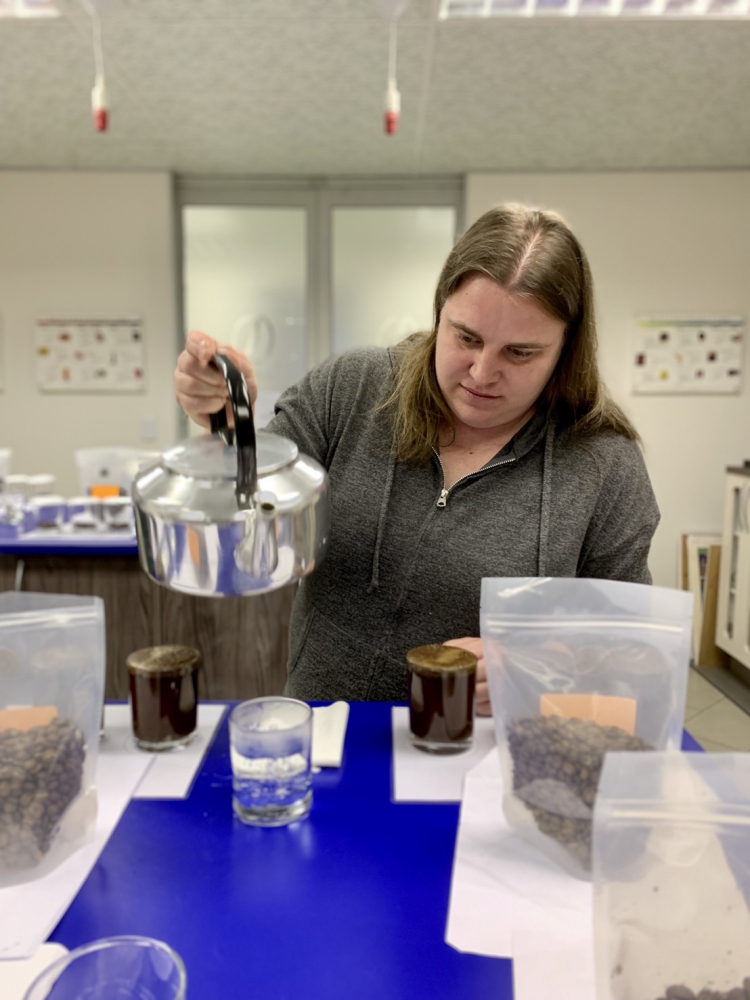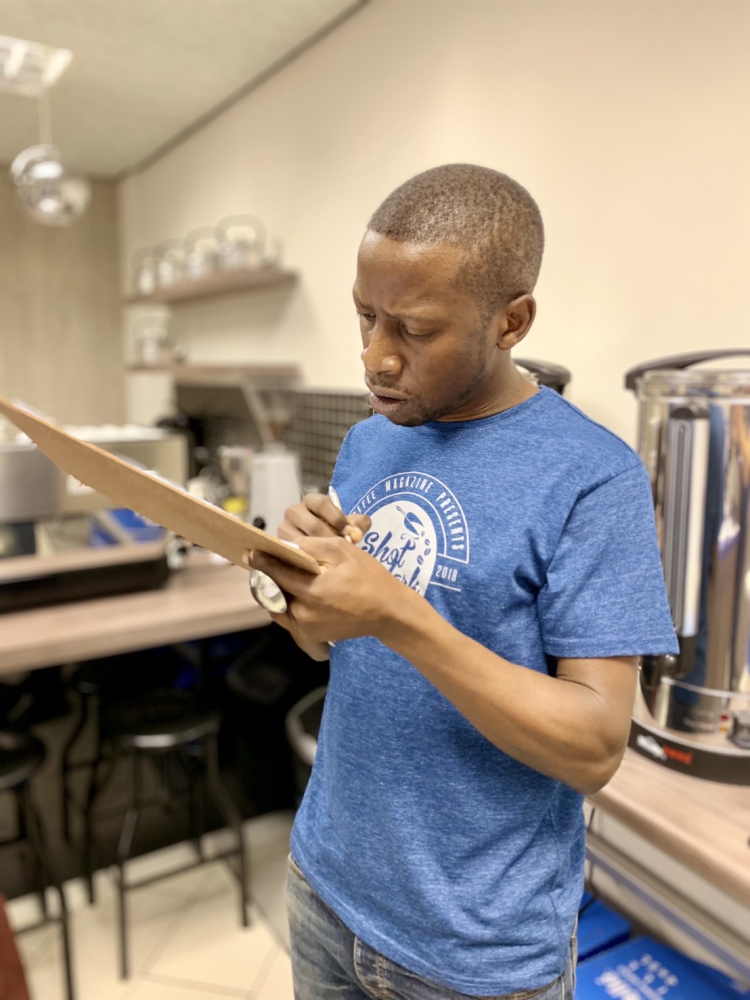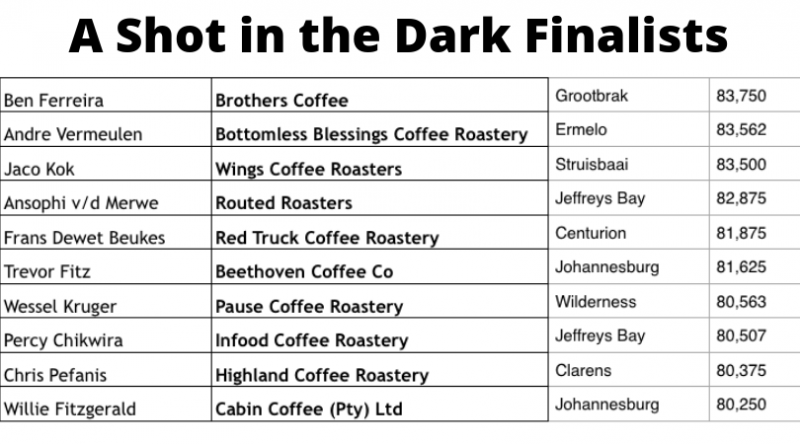It is no secret that as South Africans, we love to compete.
In Sports, we passionately cheer on Bafana Bafana, wave our Springbok flags and Paint proteas on our faces. In Business, we have produced World leaders like Elon Musk and Mark Shuttleworth. We have a fierce spirit of innovation, originality and drive.
When it comes to roasting coffee, it is clear that nothing is different.
43 South African coffee roasters entered Coffee Magazine’s "A Shot in the Dark” sponsored by Genio Roasters. In the end only 10 would qualify for the Finals round. Now, this number 43 seems like a smallish number, right? But standing in the Sevenoaks Boardroom, and seeing 43 bags of coffee, snaking all the way down the long table and all the way back down the other side, with handwritten Roaster's Notes alongside each bag, the hairs on my arms stood on end. Because every single one of those 43 bags of coffee represented a person or a team of people, who spent countless hours planning, testing, experimenting and tweaking. Honing their craft to bring out the very best possible flavour and potential of this Tanzanian bean.

We are so proud of every competitor for being part of this initiative. It's no mean feat to put yourself out there and we were blown away by the standard of roasting. The judges prepared detailed feedback for each roaster, so the learning experience is invaluable for all who participated.
If you asked a person off the street - “what does coffee taste like”, you may get a few quizzical looks. Like coffee surely! Yet, what this competition revealed, and to our knowledge, is the first time in history, that so many roasters have all roasted the exact same coffee and had it cupped simultaneously on the same day by qualified Q-graders, is that the skill of roasting coffee has a massive outcome on the final flavour in the cup. And more than this, the clarity, the body, the sweetness, the aftertaste…literally all of the components that make a great coffee great!
In the end, out of scores of 100, there was only 8,4 points difference between everyone in the competition.
As Al Pacino famously said in his iconic halftime speech in Any Given Sunday:
“In either life or football the margin for error is so small. I mean one half step too late or to early you don't quite make it. One half second too slow or too fast and you don't quite catch it. The inches we need are everywhere around us. They are in ever break of the game every minute, every second.”
South Africa has a handful of qualified Q-Graders and we were lucky enough to have 4 of them to run the judging of A Shot in the Dark; Cuth Bland, Nicodemus Nabakwe, Mike Mac Donald and Abby Berman. They cupped 43 coffees blind. And they scored them down to 100th of a point. At no point in the day did they know who’s coffee they were tasting. The cupping lab at Sevenoaks is Internationally certified as an SCA approved cupping lab. The water used was the same water specified on the entry forms. In short, every single measure was taken to ensure that the coffees were judged objectively, consistently and without bias as far as we could control.
What did the judges have to say? Surely the same coffee roasted by 43 roasters would yield the exact same scores? Surprisingly, there was only one tie.

Cuth Bland says, “Citrus notes, caramels and florals have been prominent. It’s really interesting. For me, the coffee does display quite a lot of complexity. It’s an exciting coffee and it’s been so interesting to see what different people have done with it. "

The competition format for the first part of the Shot in the Dark roasting competition
How the coffee was scored-
We used the standard SCA cupping sheet and focused on the following areas-
We left out the following from the cupping sheet and added 30 points( the sum of all these categories if fully correct) to the total.
We then added a bonus category that was created with the intention of giving the roaster up to 2 points if his flavour descriptors were on point.
1 - not correct (0pts)
2 - somewhat accurate (1pts)
3 - accurate (2pts)
This was assessed and scored after discussing the score sheet. The roasters notes were only looked at after the score sheet discussion.
In general, the judges made it incredibly difficult for someone to score high- as the roast was judged and not the coffee.
How we cupped the coffees-
We laid out tables of 8-9 coffees at a time, with 3 cupping bowls of each coffee. Beans were also inspected during the cupping to take note of colour variation. All coffees were noted down as numbers and were completely randomized. None of the judges knew who’s coffee was who’s at any point. All cupping was done according to SCA specifications.
So without further delay, well done to the 10 roasters who have made it through to the Finals Round. We look forward to robust discussion at the Shot in the Dark session at Creative Coffee Week 2019. Hopefully a good group of the 43 roasters will be gathered to discuss and grow together.
